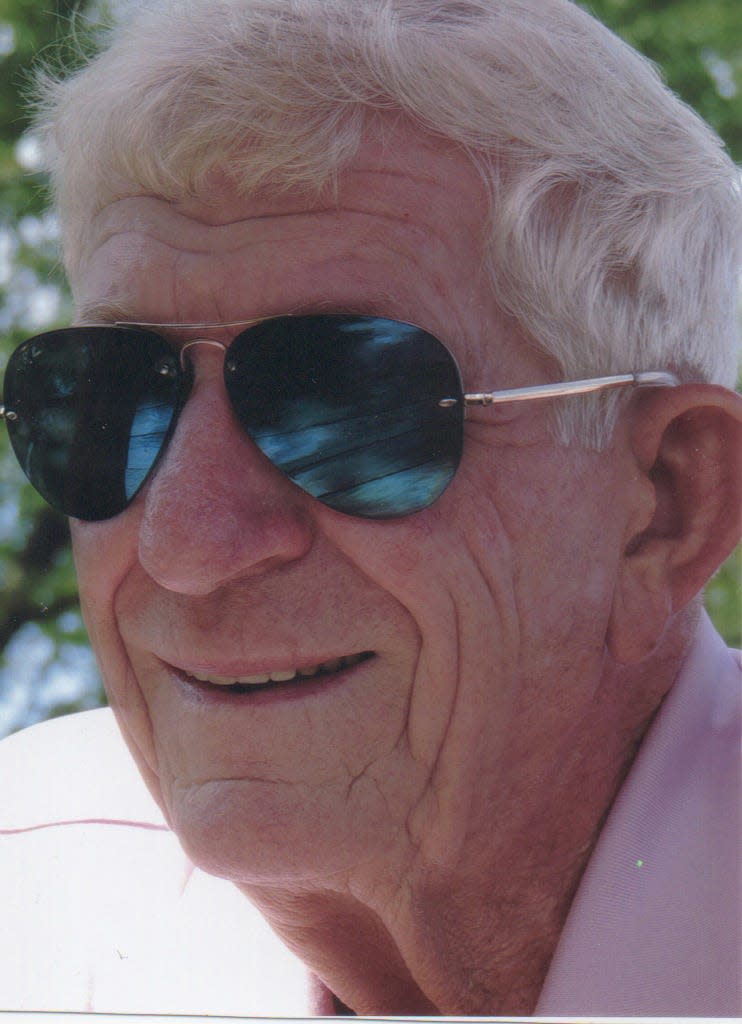JOHN F. FLOYD COMMENTARY: Another interaction with America's best of the best

This is a follow-up to last week’s commentary about my adventures on board two of the United States’ most formidable weapons of war, the USS Carl Vinson, CVN 70. and the USS John Stennis, CVN 74.
First was the USS Carl Vinson, operating about 175 miles off the coast of California. Needless to say, I had never experienced anything to compare with landing on the ship, watching aircraft operations for two days and being catapulted off the ship when my visit concluded.
I talked about the experience of being on board the carrier with such enthusiasm, Connie, my wife, arranged for another “familiarization” cruise on the USS John Stennis. But this time, the carrier was in “shake down operations” in the Gulf of Mexico, about 100 miles south of Pensacola, Florida.
Again, I was told I could bring two friends with me, so I invited the mayor of Kokomo, Indiana, Jim Trobaugh, and Randy Michaels, son of respected longtime Goodyear-Gadsden plant manager, A.C. Michaels.
Our departure to the USS John Stennis was from Naval Air Station Pensacola. NAS is the primary base for all U.S. Navy, Marine Corps and Coast Guard pursuing designation as naval aviators and flight officers.
The base is also the home for the U.S. Navy Flight Demonstration Squadron, the precision flying team known as the Blue Angels. The three of us toured the Blue Angel facilities before our trip to the USS John Stennis.
The Pensacola base is known as the “Cradle of Naval Aviation.” The base was built in 1913, and is owned by the Department of Defense.
One of my best friends, Navy Capt. David Silkey, was a Blue Angel pilot in 1998 and 1999. Dave’s story of how he became a Blue Angel is interesting.
In his youthful days, he was literally a beach bum in Los Angeles. Then he met his wife, Becky, whose father was an admiral in the Navy. To make a long story short, Becky’s father invited Dave and Becky to an airshow featuring the Blue Angels. Dave was inspired by the professionalism and ability of the Blue Angels, and while staring at the wonderful intricate formations of the Naval Demonstration Team, he told Becky, “That is what I want to do.”
You don’t just say you want to be a member of such an august body, however. It takes years of education and flight training to qualify for even being considered for inclusion in such an elite organization.
Dave enrolled at the University of California, graduated, went in the Navy as an officer, attended flight school, was chosen to be a member of the Blue Angels and flew position No. 3 in 1998 and position No. 4 in 1999. A naval pilot can only serve in the Blue Angels for two years unless you are chosen to lead the formation. Capt. Silkey (ret.) is now in the aviation business in California.
But only in America can you progress from a beach bum to a respected member of one of the most prestigious organizations in the world. My association with Capt. David Silkey began in a strange way and was enhanced by unbelievable circumstances. But that is a story for another commentary.
As I previously stated, the USS John Stennis was in its sea trials. The carrier did not have a full complement of aircraft, only 30 when a full ship is 70. Nevertheless, it did not take away the excitement of watching the Navy flawlessly launch and retrieve aircraft.
We even got to be in the ready room and hear the critique of the landing of each aviator. One aviator was almost sent back to Pensacola. If a pilot misses the tailhook three times, he or she is sent back to a land base for further training.
It is interesting to see the sequence of launches from the ship. First, the helicopters are launched to retrieve any aviators who might be in the water due to a “cold shot,” a term for a malfunction of the catapult.
Second, the air refuelers are launched. The reason for refuelers is simple: If an airplane breaks a tailhook, it can no longer land on the carrier. Consequently, it has to have enough fuel to get back to base.
I have witnessed the courage, professionalism and dedication to duty of America’s best, twice. The U.S. Naval aviators and crews of America’s fighting ships are the best of the best.
John F. Floyd is a Gadsden native who graduated from Gadsden High School in 1954. He formerly was director of United Kingdom manufacturing, Goodyear Tire & Rubber Co., vice president of manufacturing and international operations, General Tire & Rubber Co., and director of manufacturing, Chrysler Corp. He can be reached at johnfloyd538@gmail.com. The opinions reflected are his own.
This article originally appeared on The Gadsden Times: John Floyd gets up close look at Blue Angels

